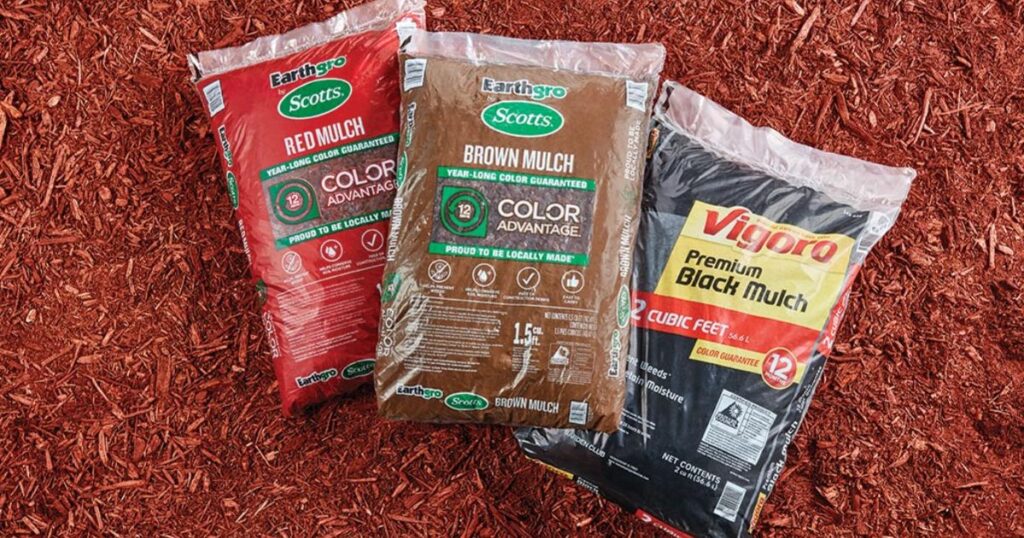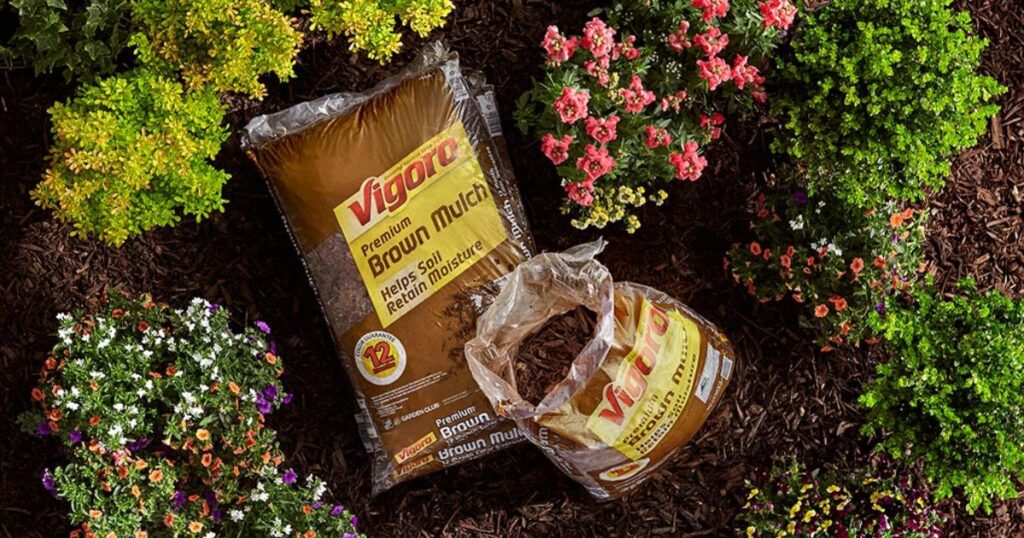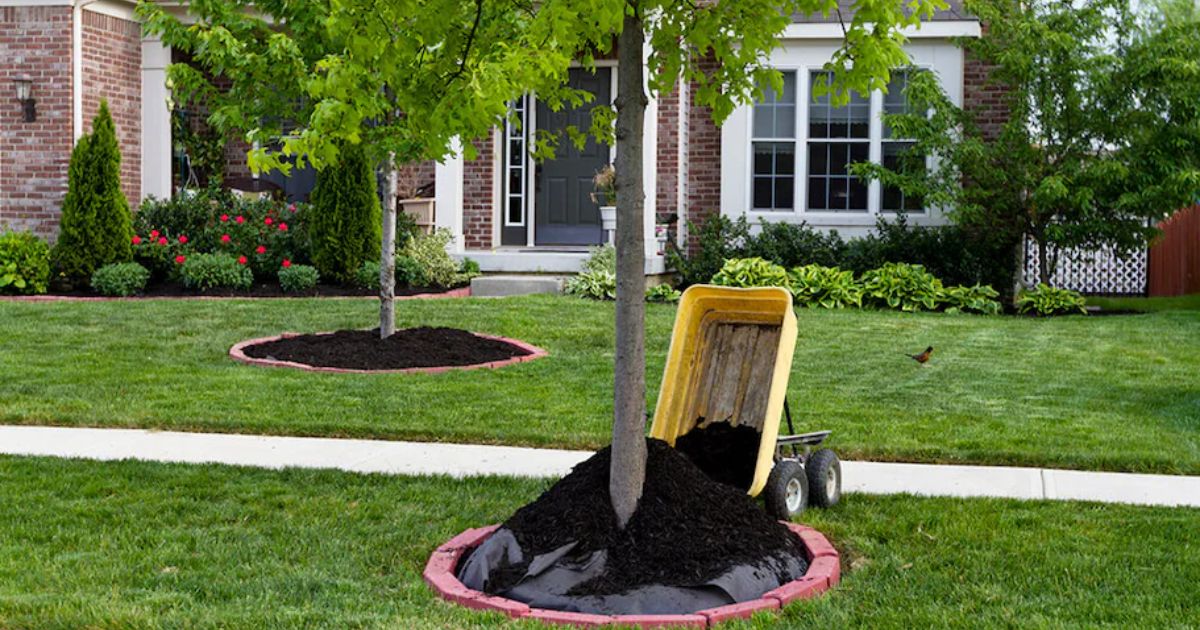Mulch is a versatile material used in gardening and landscaping to cover the soil’s surface. It serves several purposes: conserving moisture, improving soil health, reducing weed growth, and enhancing the visual appeal of an area. Mulch can be organic, such as wood chips and straw, or inorganic, like gravel and rubber.
Using mulch is crucial for maintaining healthy plants and an attractive landscape. It helps regulate soil temperature, retain moisture, and prevent erosion. Bags of Mulch Moreover, organic mulch decomposes over time, enriching the soil with nutrients. This comprehensive guide will help you determine how many bags of mulch you need for your yard, ensuring you use the right amount for optimal benefits.
Understanding Mulch Measurements

A cubic yard is a unit of volume measurement commonly used in landscaping. It measures 3 feet by 3 feet by 3 feet, or 27 cubic feet in total. Bags of Mulch Understanding this measurement is essential for purchasing the correct amount of mulch.
Mulch is typically sold in bags of various sizes, with the most common being 2 cubic feet and 3 cubic feet. Some specialty mulch products may come in smaller or larger bags, but these two sizes dominate the market.
Converting Cubic Feet to Cubic Yards

To convert cubic feet to cubic yards, you divide the number of cubic feet by 27. For example, if you have 54 cubic feet of mulch, you would have 2 cubic yards (54 ÷ 27 = 2).
Calculating Mulch Needs
To determine how much mulch you need, start by measuring the area you want to cover. Use a measuring tape to find the length and width of the space, then multiply these numbers to get the total square footage. Bags of Mulch For irregularly shaped areas, break them down into smaller sections, calculate each section’s square footage, and then add them together.
The depth of mulch you apply affects how much you need. Common depths are 2-4 inches. Bags of Mulch Thicker layers are better for weed suppression and moisture retention, but too much mulch can suffocate plant roots.
A mulch coverage calculator can simplify this process. These online tools allow you to input your area’s square footage and desired depth to calculate the exact amount of mulch needed. Alternatively, you can use the following formula:
Cubic Yards of Mulch=Square Footage×Depth (in inches)324\text{Cubic Yards of Mulch} = \frac{\text{Square Footage} \times \text{Depth (in inches)}}{324}Cubic Yards of Mulch=324 Square Footage×Depth (in inches). This formula accounts for the conversion from inches to feet and cubic feet to cubic yards.
Read More Blog: Can Americans Travel To Cuba
Types of Bags of Mulch

- Organic Mulch
- Wood Chips and Bark
- Straw and Hay
- Compost
- Inorganic Mulch
- Gravel and Pebbles
- Rubber Mulch
Benefits of Mulching
- Moisture Retention: Mulch helps retain soil moisture by reducing evaporation, which is particularly beneficial during hot, dry periods.
- Soil Temperature Regulation: Mulch acts as an insulator, keeping soil temperatures more consistent. It protects plant roots from extreme heat and cold.
- Weed Suppression: A thick layer of mulch blocks sunlight, preventing weed seeds from germinating and reducing the need for weeding.
- Soil Health Improvement: Organic mulches break down over time, adding organic matter to the soil and improving its structure and fertility.
- Aesthetic Enhancement: Mulch adds a finished look to garden beds and landscapes, enhancing their visual appeal. It can complement plantings and create a cohesive look.
How to Apply Mulch Correctly?

- Before applying mulch, clear the area of weeds and debris. This preparation ensures that the mulch will be effective at suppressing weeds and looks tidy.
- Select a mulch type that suits your garden’s needs and aesthetic preferences. Consider factors like decomposition rate, nutrient content, and appearance.
- Apply mulch to a depth of 2-4 inches. Too little mulch won’t suppress weeds effectively, while too much can harm plant roots.
- When mulching around plants, keep mulch away from the stems and trunks to prevent rot and pest problems. A gap of a few inches is usually sufficient.
- Over time, mulch decomposes and compresses. Add a fresh layer annually to maintain its effectiveness and appearance.
Frequently Asked Questions
How Many Bags of Mulch Do I Need for One Cubic Yard?
To cover one cubic yard, you will need 13.5 bags of mulch if each bag contains 2 cubic feet, or 9 bags if each bag contains 3 cubic feet.
Can I Use Multiple Types of Mulch Together?
Yes, you can use different types of mulch together. For example, you might use a layer of compost for soil enrichment topped with bark chips for appearance and weed suppression.
How Often Should I Reapply Mulch?
Reapply mulch annually or as needed to maintain the desired depth. Organic mulches decompose over time and may need to be replenished more frequently than inorganic mulches.
What Are the Best Mulches for Vegetable Gardens?
Compost, straw, and hay are excellent choices for vegetable gardens due to their nutrient content and ability to improve soil health.
Can Mulch Attract Pests?
Organic mulches can attract pests, especially if applied too thickly. To minimize this risk, keep mulch away from plant stems and monitor for pest activity.
Conclusion
Understanding how many bags of mulch you need involves knowing the size of your area, the desired mulch depth, and the size of mulch bags available. Using the right amount of mulch enhances soil health, retains moisture, suppresses weeds, and improves the aesthetic appeal of your garden. Bags of Mulch Choose the right type of mulch for your needs, apply it correctly, and maintain it annually for the best results. Mulching is a simple yet effective way to improve your garden’s health and appearance.











